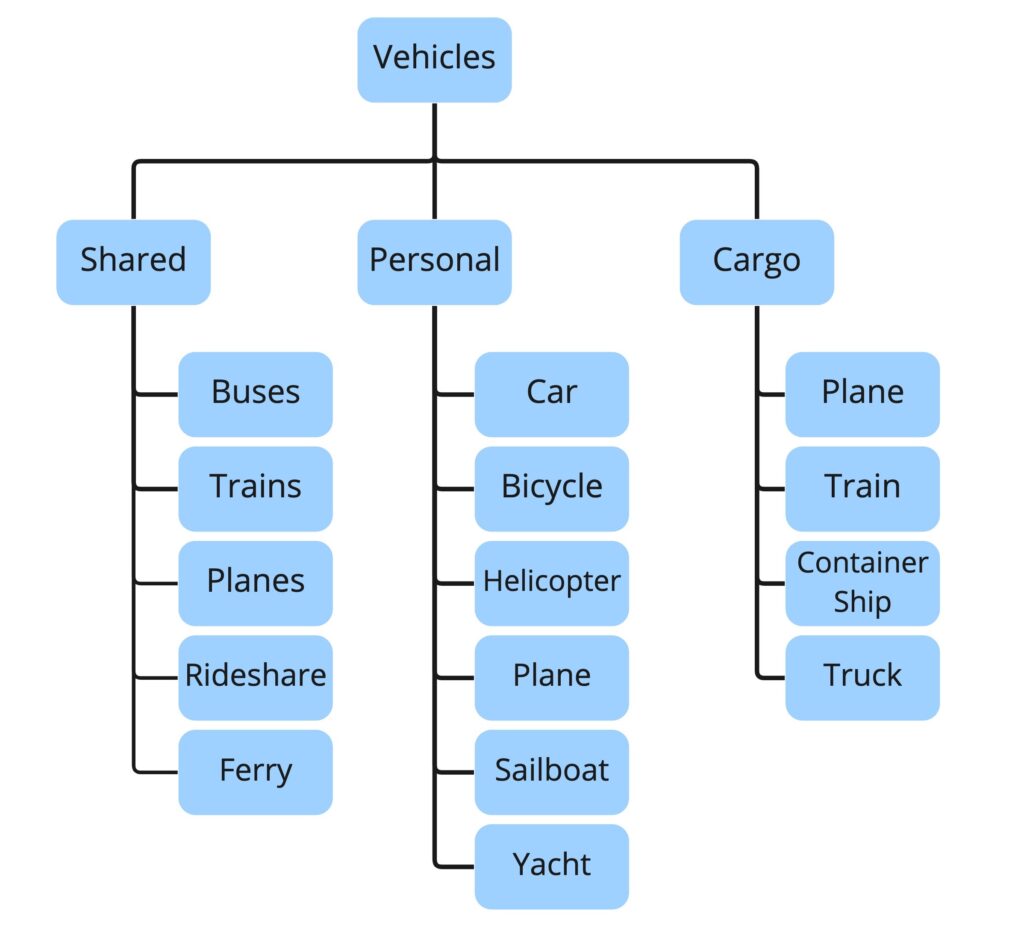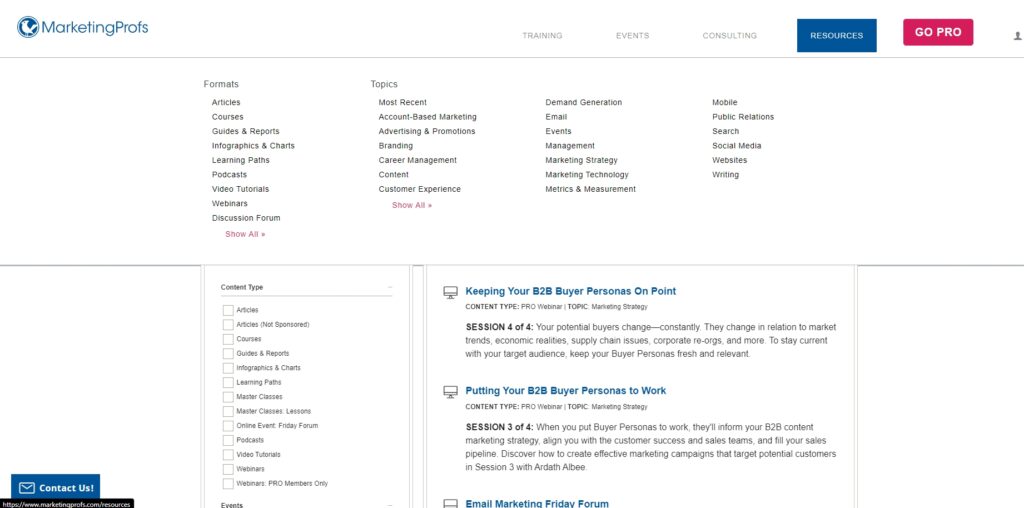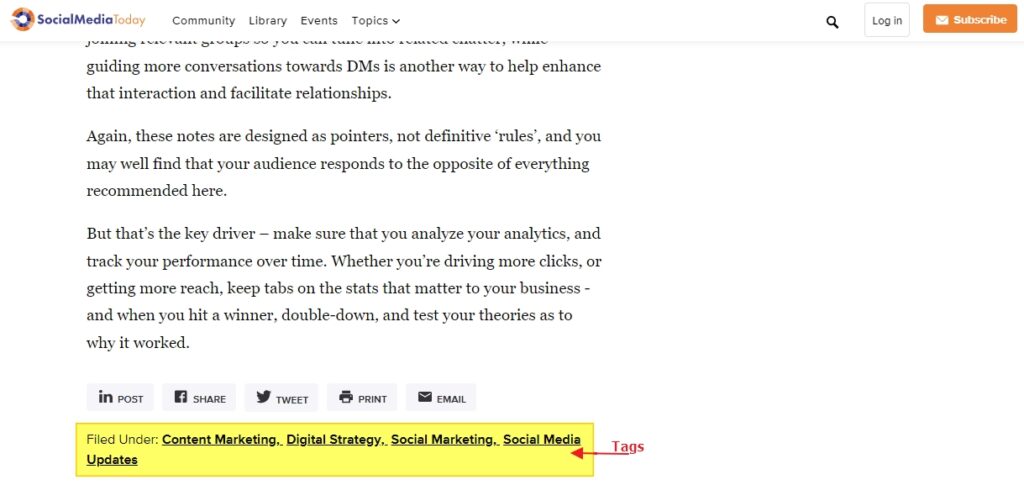Content marketing is a non-negotiable in today’s business world. Unfortunately, the problem that most content marketers face is creating content for the sake of creating content.
This is problematic for several reasons. First, it leads to content that easily gets lost in the sea of information online. Second, it makes the content seem less authentic and less valuable to potential customers. Finally, it leads to content that’s never used.
With approximately 70% of B2B content created never being utilized, there’s a clear need to take a more strategic approach to content marketing. One way to do that is to implement a content taxonomy.

What is Content Taxonomy?
Content taxonomy is a way to organize content into a more meaningful structure that uses controlled vocabulary to define relationships between content items. According to the Nielsen Norman Group, it uses descriptive metadata to group similar pieces of content together into different categories and subcategories.

Source: Nielsen Norman Group
3 Types of Content Taxonomy
Research shows that approximately 38% of consumers first look at a website’s navigational structure when visiting a new site. They will click away and look elsewhere if they find it difficult to use. Content taxonomy is a widely used approach for organizing content, making it easier for users to navigate your website and find what they’re looking for. While there are several different types of content taxonomy for use, there are three that stand out as being particularly effective:
- Flat Taxonomy: This is one of the simplest forms of content taxonomy and is most often used by smaller businesses that don’t have a lot of content to organize. The flat taxonomy system allows you to create categories, such as “invoicing” or “accounting,” and then organize your content into those categories.
- Hierarchical Taxonomy: This form of content taxonomy is similar to a flat taxonomy in that you can still create categories, but the categories are organized into a hierarchy that allows you to further break down your primary categories into more specific subcategories.
- Network Taxonomy: For larger organizations in the B2B space, a network taxonomy is an effective strategy because it allows you to connect related categories to create a network of related content relevant to your audience.
Why is Content Taxonomy Important?
Content taxonomy is essential because it provides a structure for organizing content into a clear, concise, and easily navigable hierarchy. Not only does it help your marketing and sales team find what they need, but it also helps simplify things for your audience as well.
Having this predefined hierarchy makes your site easier to navigate, which plays a significant role in increasing your content engagement and improving your user experience. In fact, approximately 70% of website users say they prefer web designs with high usability (easy to use). In comparison, 89% say that a poor user experience drives them to a competitor’s website to find what they need.
Content Taxonomy Examples
MarketingProfs does an excellent job with its content taxonomy, which makes finding the content you need simple and easy. Their hierarchy is well structured, allowing users to easily navigate between different categories and subcategories to find precisely what they’re looking for.

Source: MarketingProfs
Here at Hushly, we utilize a simple hierarchy taxonomy to break down our online content into easy-to-navigate categories. This allows our audience to find the information they’re looking for quickly and ensures that our content remains organized and user-friendly.

Source: Hushly
How to Set Up a Content Taxonomy Strategy in 5 Simple Steps
Content taxonomy is a powerful tool for organizing and managing content. Setting up a content taxonomy strategy is simpler than it sounds, and it can be done in five easy steps:
1. Define Your Brand’s Purpose and Audience Needs
Without a clear purpose and understanding of your audience’s needs, you can easily fall into the trap of producing content that doesn’t speak to your target market, resulting in poor performance, wasted resources, and reduced ROI.
With that in mind, if you already have an established content strategy but think you could benefit from better organization, then you should run a content audit. This will allow you to evaluate what type of content you have, which is working well, and which needs to go. It will also help you better identify your audience and their needs.
2. Do Your Keyword Research
Keyword research is an absolute must when creating your content taxonomy. This will help you find out what your audience is searching for online and how your brand can meet those needs. Not only does this help you create content that will resonate with your target audience, but it will help you better organize your content into categories and subcategories and develop tags so your audience can easily find the information they need when they need it.

Source: Social Media Today
3. Choose a Taxonomy Structure
If you’re a smaller organization just starting out with content marketing, consider using a flat taxonomy that helps your audience get right to the content they want to see. However, if you’re a well-established company with multiple verticals, then you may need a multi-level taxonomy that will help you organize all of your content and create an intuitive user experience.
Keep in mind that roughly 42% of people will leave a website due to poor functionality. So make sure you’re not overcomplicating your taxonomy structure, especially if you’re a smaller brand that’s still developing your content strategy.
4. Test Your Taxonomy Structure
As with any system, you won’t know whether it works until you’ve tested it. One of content taxonomy’s ultimate goals is to improve your website’s user experience. With 88% of consumers saying they won’t return to a website after a single poor user experience, it’s crucial that you organize your site and make it easy for your audience to navigate.
So, when testing your content taxonomy structure, you’ll want to keep these things in mind:
- Are my primary categories clearly defined and addressing the audience’s primary needs?
- Are my secondary categories clearly linked to the proper primary categories?
- Do my meta tags accurately describe the content of my pages and link to the appropriate categories?
- Does my content taxonomy simplify the user experience on my website?
5. Monitor and Optimize as You Grow
Finally, you want to ensure you’re giving your content taxonomy the time it needs to take root. You’re simply not going to see results overnight. You need to test your taxonomy structure over a period of time to determine whether or not it works. As you monitor your site’s performance, you’ll be able to further organize and optimize your content taxonomy and strategy as a whole.
Get Deeper Insight into Your Audience’s Needs with Content Analytics from Hushly
Understanding your audience and their needs is the cornerstone of a successful content taxonomy strategy. With Hushly, you can better understand what your audience really wants and tailor your content taxonomy accordingly. By tracking user behavior and engagement, you can optimize your content strategy and ensure that your content taxonomy is optimized to meet your audience’s needs.
See how Hushly’s content analytics can help you better understand your audience by requesting your demo today.




